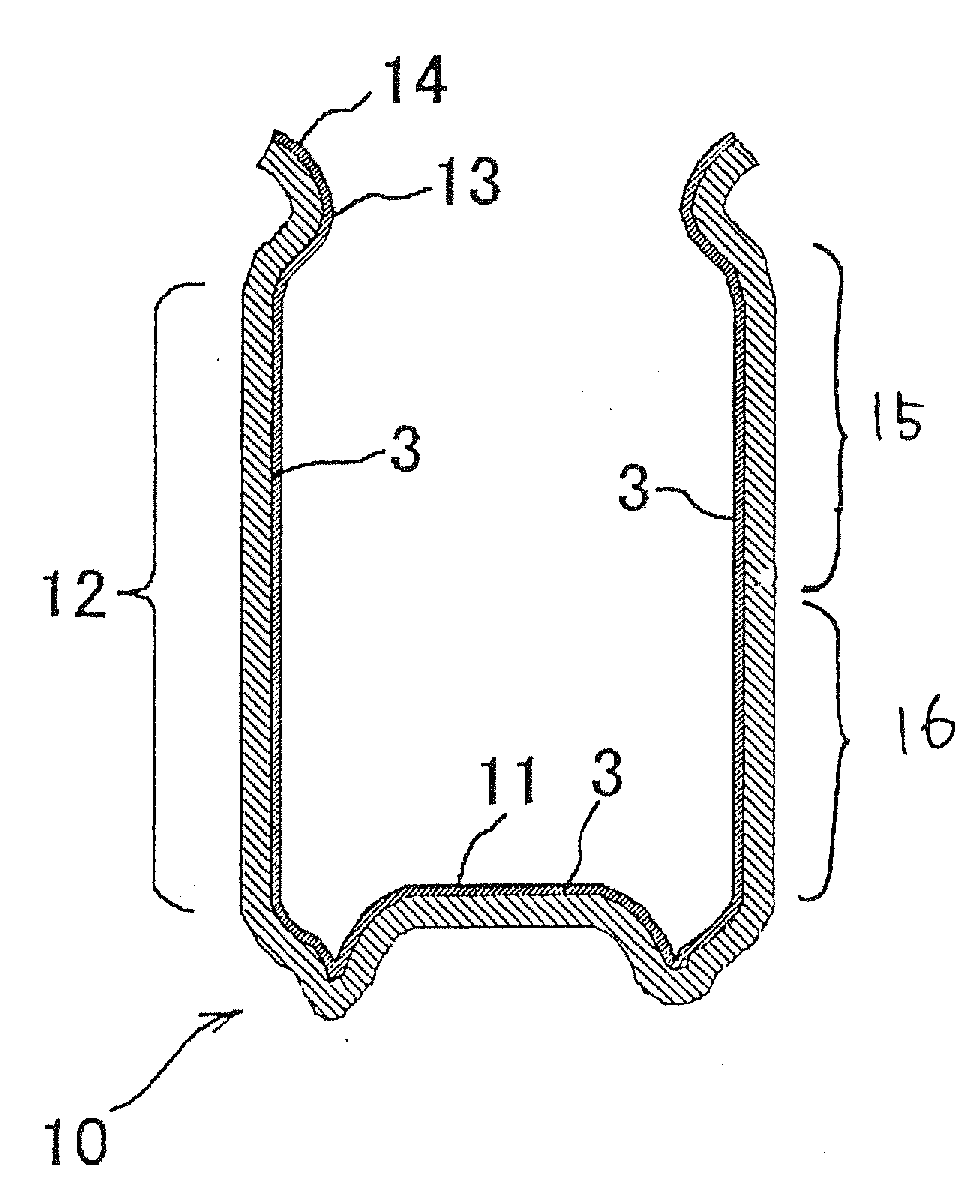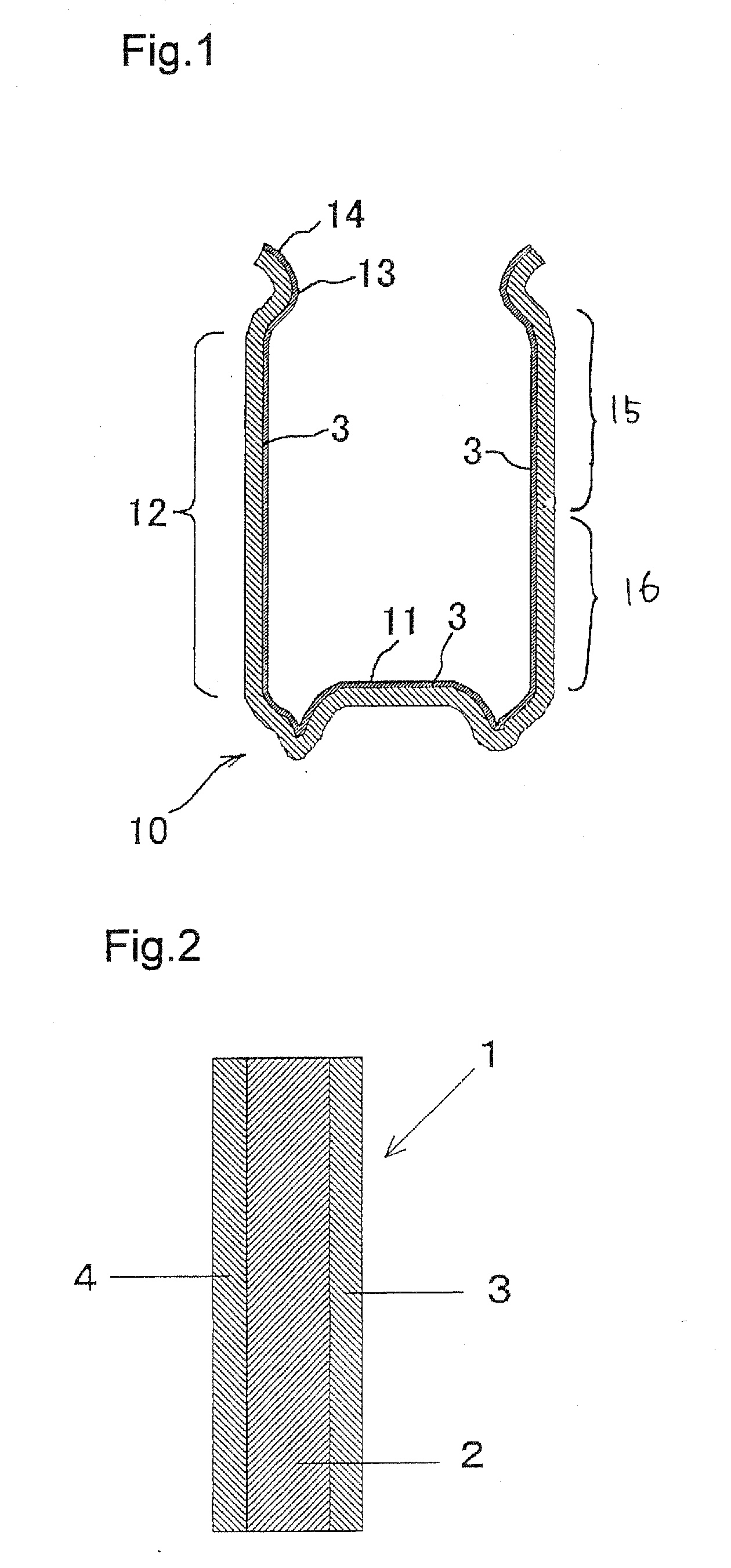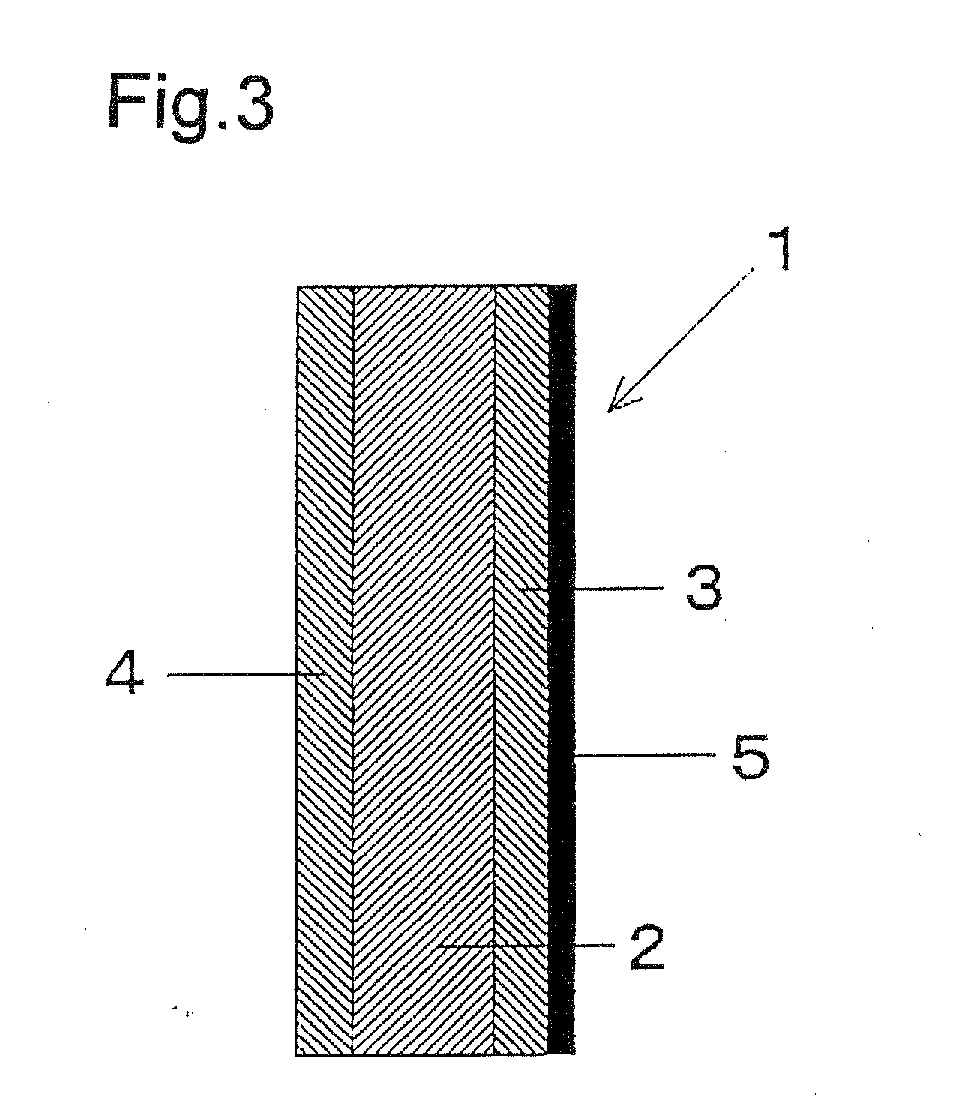Resin coated seamless can
a seamless can and resin coating technology, applied in the field of resin coating seamless cans, can solve the problems of general corrosion under film corrosion, difficult resin coating of metal sheets, and easy progress of resin coating under film corrosion, etc., to prevent taste change, maintain corrosion resistance, and shock resistance
- Summary
- Abstract
- Description
- Claims
- Application Information
AI Technical Summary
Benefits of technology
Problems solved by technology
Method used
Image
Examples
example 1
[0120]Polyester resin having the composition C shown in Table 1 was charged into a biaxial extruder, was extruded through T dies to form films having a thickness of 20 μm. The films were cooled by cooling rollers and the cooled film were wound to form cast films. Thereafter, the films formed in the above manner were thermally laminated to both surfaces of an aluminum alloy sheet (sheet thickness: 0.28 mm, A3004 material, chromic acid / phosphate surface treatment). The lamination was immediately followed by water cooling thus obtaining a polyester resin-coated metal sheet. The temperature of the metal sheet before the lamination was set to a temperature 15 degree centigrade higher than a melting point of polyester resin and the lamination was performed by setting a temperature of lamination rolls to 150 degree centigrade and at a sheet travelling speed of 40 m / min thus producing the resin-coated metal sheet.
[0121]The polyester resin-coated metal sheet produced in this manner was coate...
example 2
[0127]A seamless can was produced by a method similar to the method of the example 1 except for that this embodiment used polyester resin having the composition D shown in FIG. 1.
example 3
[0128]A seamless can was produced by a method similar to the method of the example 1 except for following conditions. That is, in this embodiment, polyester resin having the composition B shown in Table 1 which constitutes a surface layer and the polyester resin having the composition D shown in Table 1 which constitutes a lower layer were charged into two biaxial extruder and were extruded through a two-layer T-die thus forming a two-layered cast film, wherein a thickness of the surface layer was 5 μm and a thickness of the lower layer was 15 μm. Thereafter, a laminated material was obtained by using the cast film.
PUM
| Property | Measurement | Unit |
|---|---|---|
| density | aaaaa | aaaaa |
| density | aaaaa | aaaaa |
| thickness | aaaaa | aaaaa |
Abstract
Description
Claims
Application Information
 Login to View More
Login to View More - R&D
- Intellectual Property
- Life Sciences
- Materials
- Tech Scout
- Unparalleled Data Quality
- Higher Quality Content
- 60% Fewer Hallucinations
Browse by: Latest US Patents, China's latest patents, Technical Efficacy Thesaurus, Application Domain, Technology Topic, Popular Technical Reports.
© 2025 PatSnap. All rights reserved.Legal|Privacy policy|Modern Slavery Act Transparency Statement|Sitemap|About US| Contact US: help@patsnap.com



